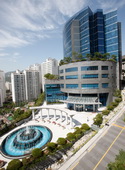History of the University
A Brief History of the University
Seokyeong University came into being as Hankook University at 2-ka, Changchung-dong, Chung-gu, Seoul, on October 22, 1947.
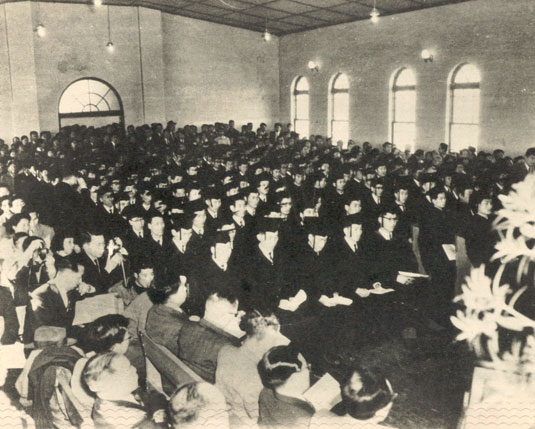 The university was the first evening school authorized as a four-year university to provide education to people who wanted to work by day and attend school by night. This would enable people to help rebuild their devastated nation after the liberation from Japanese colonial rule.
The university was the first evening school authorized as a four-year university to provide education to people who wanted to work by day and attend school by night. This would enable people to help rebuild their devastated nation after the liberation from Japanese colonial rule.
After the Korean War, which was followed by a short American Military Rule, and throughout the chaotic social situation in 1950’s, Korean private educational institutions faced many ordeals. Even though Hankook University opened special wartime classes in Jejudo, in the midst of the tragic Korean War, it was forced to close its doors on September 30, 1954. In 1955, as the Kookjae Hakwon Foundation took over Hankook University, its name was changed to Kookjae University.
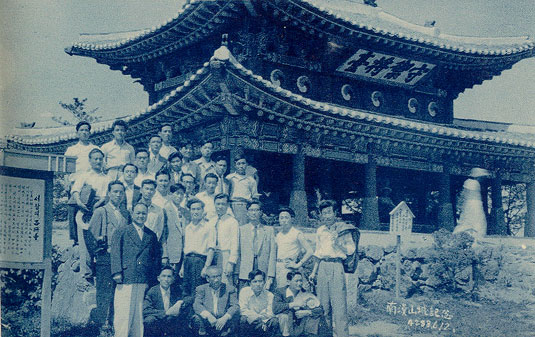 Taken over by the Kamri(Methodist) Hakwon Foundation later on, it once again changed hands when the Ewha Hakdang Foundation took over the school in 1958. Kookjae University then enjoyed a good reputation for its industrious students for the next 20 years. At that time, due to the unique characteristic of Kookjae University students learning late in life, they were even more eager to study, and eventually the graduates found their ways in every field of society including the academic world, the political world, and the legal world. Influenced by the post war idea of “spending the days in the field and the nights at the books,” after the liberation, many students who were part of the workforce realized the necessity of education and set a high value on learning.
Taken over by the Kamri(Methodist) Hakwon Foundation later on, it once again changed hands when the Ewha Hakdang Foundation took over the school in 1958. Kookjae University then enjoyed a good reputation for its industrious students for the next 20 years. At that time, due to the unique characteristic of Kookjae University students learning late in life, they were even more eager to study, and eventually the graduates found their ways in every field of society including the academic world, the political world, and the legal world. Influenced by the post war idea of “spending the days in the field and the nights at the books,” after the liberation, many students who were part of the workforce realized the necessity of education and set a high value on learning.
 Entering the 70’s, due to the expansion of many universities and the increase in the number of the double-shift universities, Kookjae University was lost its unique characteristic as the only authorized evening university in Korea. Besides, as the foundation of the university was changed from Ewha Hakdang to Sammoon Hakwon, and again from Sammoon Hakwon to Myeongji Hakwon, the university was bound to go through many growing pains, which turned out to be detrimental to its normal development.
Entering the 70’s, due to the expansion of many universities and the increase in the number of the double-shift universities, Kookjae University was lost its unique characteristic as the only authorized evening university in Korea. Besides, as the foundation of the university was changed from Ewha Hakdang to Sammoon Hakwon, and again from Sammoon Hakwon to Myeongji Hakwon, the university was bound to go through many growing pains, which turned out to be detrimental to its normal development.
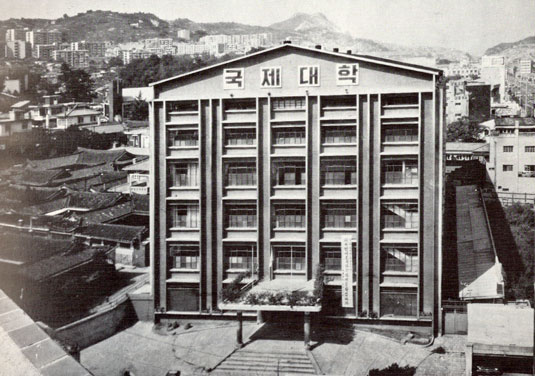 It was when the Sunghan Hakwon Educational Foundation, with Chairman Sung Min Kim, took over the University that the University began to make great strides towards steady development. Since the rebirth in April 1987, the University has grown remarkably in a relatively short period of time.
It was when the Sunghan Hakwon Educational Foundation, with Chairman Sung Min Kim, took over the University that the University began to make great strides towards steady development. Since the rebirth in April 1987, the University has grown remarkably in a relatively short period of time.
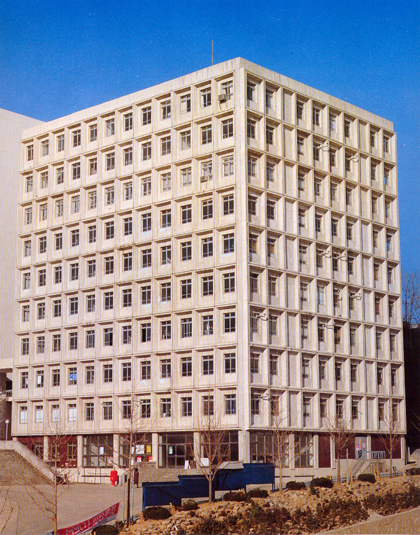 Firstly, on March 1, 1998, its campus was transferred from Namgazwa-Dong, Sodaemoon-Ku to 16-1 Jungneung-Dong, Sungbuk-ku, which is the current location. It was the historical moment when the University began to secure its land, buildings, and facilities for the first time in its 40 year history. By providing lectures at the newly built Main Building and Hanlim Building, the University became the site for practical education and academic research for many talented students. Kookjae University grew from 3 divisions with 9 departments to 3 divisions with 10 departments(620 students) by establishing the Department of Accounting under the Division of Economics and Business Administration.
Firstly, on March 1, 1998, its campus was transferred from Namgazwa-Dong, Sodaemoon-Ku to 16-1 Jungneung-Dong, Sungbuk-ku, which is the current location. It was the historical moment when the University began to secure its land, buildings, and facilities for the first time in its 40 year history. By providing lectures at the newly built Main Building and Hanlim Building, the University became the site for practical education and academic research for many talented students. Kookjae University grew from 3 divisions with 9 departments to 3 divisions with 10 departments(620 students) by establishing the Department of Accounting under the Division of Economics and Business Administration.
 In April 1988, Dr. Duk Young Oh assumed office as the 15th Dean. In November, 1989, the Kookjaedae Hakwon Educational Foundation was established to take full control of the university, independent of the Sunghan Hakwon Educational Foundation, which consolidated the foundation for the university development. In the 1990’s, the University showed remarkable development in every respect. In July 1990, the Social Education Center was launched with the aim of offering life-long education to the community and teaching new information and technology. Thereby, the University came to play another role in community service.
In April 1988, Dr. Duk Young Oh assumed office as the 15th Dean. In November, 1989, the Kookjaedae Hakwon Educational Foundation was established to take full control of the university, independent of the Sunghan Hakwon Educational Foundation, which consolidated the foundation for the university development. In the 1990’s, the University showed remarkable development in every respect. In July 1990, the Social Education Center was launched with the aim of offering life-long education to the community and teaching new information and technology. Thereby, the University came to play another role in community service.
In October 1990, three new departments - the Department of Industrial Engineering, the Department of Applied Statistics, and the Department of Information Processing - were established. In November 1990, the Graduate School of Business & Public Administration was founded for the purpose of academic specialization and educational-industrial cooperation. In October 1991, the Departments of Russian Language & Literature, Chinese Language & Literature, Chemistry, Applied Mathematics, and Industrial Design were opened. As a result, the University consisted of 18 departments, and its admission quota amounted to 1,000 with a separate increase of 20 students in the departments of Industrial Engineering, Applied Statistics, and Information.
On April 1, 1992, Kookjae University was licensed as a full-fledged university with 4 divisions and 18 departments, and Dr. Duk Young Oh was inaugurated as the first president. The university then went through a preliminary phase of strengthening the base of the academic atmosphere and internal growth, thereby entering an advanced phase for its full-scale development.
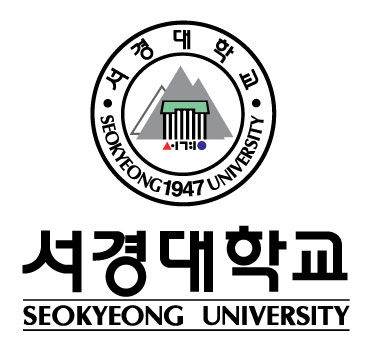 With the aspiration and will for the development of the university, “Kookjaedae Hakwon” Educational Foundation was renamed “Seokyeongdae Hakwon” Educational Foundation, in June 1992. In September of that year, Kookjae University was renamed Seokyeong University. Furthermore, in July 1992, the University began to establish itself as a daytime university by opening the Department of Biological Engineering and the Department of Computer Engineering as daytime courses. At the same time, it came to play another important role of a university that of a research center by consolidating the graduate school system with the establishment of master courses in the departments of Economics and Business Administration.
With the aspiration and will for the development of the university, “Kookjaedae Hakwon” Educational Foundation was renamed “Seokyeongdae Hakwon” Educational Foundation, in June 1992. In September of that year, Kookjae University was renamed Seokyeong University. Furthermore, in July 1992, the University began to establish itself as a daytime university by opening the Department of Biological Engineering and the Department of Computer Engineering as daytime courses. At the same time, it came to play another important role of a university that of a research center by consolidating the graduate school system with the establishment of master courses in the departments of Economics and Business Administration.
 In July 1993, Dr. Jae Young Huh was named the second President, he made great efforts to secure competent professors, encourage research, and make short-term and long-term development plans under the slogan of "Researching University" and "University Advancing into the World." Once again, the faculty members and students were united in rearranging a variety of systems and organizations and in promoting an ideal environment for a quality education and rapid advancement of Seokyeong University.
In July 1993, Dr. Jae Young Huh was named the second President, he made great efforts to secure competent professors, encourage research, and make short-term and long-term development plans under the slogan of "Researching University" and "University Advancing into the World." Once again, the faculty members and students were united in rearranging a variety of systems and organizations and in promoting an ideal environment for a quality education and rapid advancement of Seokyeong University.
In line with this, the construction and renovation of the university buildings and facilities were under way to accommodate the increasing students.
In 1988, the University had an Administration Building with 5 stories above and one under the ground which covers about 1,950 Pyong, and the Bukak Building with 7 stories above and one under ground which covers approximately 3,850 Pyong. In 1993, it began to use the Daeil Building for lecturing with 5 stories above and 2 under ground which covers around 2,700 Pyong. In 1994, the ground was broken for the long-cherished Chungwoon Building (Student Center), and a new project was made for the construction of a Library.
In line with this, the construction and renovation of the university buildings and facilities were under way to accommodate the increasing students. In 1988, the University had an Administration Building with 5 stories above and one under the ground which covers about 1,950 Pyong, and the Bukak Building with 7 stories above and one under ground which covers approximately 3,850 Pyong. In 1993, it began to use the Daeil Building for lecturing with 5 stories above and 2 under ground which covers around 2,700 Pyong. In 1994, the ground was broken for the long-cherished Chungwoon Building (Student Center), and a new project was made for the construction of Library.
The constant improvement of the Library including the increased collection of books, documents, and relevant materials has been made to foster the academic atmosphere. State-of-the-art computers have been installed for research and administrative work. In addition, language labs, computer labs, circle rooms, and other welfare facilities have been constantly upgraded.
In addition, the student press organizations, including the newspaper office, the broadcasting station and the university magazine editorial room, which has shown brilliant improvement since foundation, as well as the voluntary student activities including the student body and various kinds of student association activities have created a university culture of intelligence and youthfulness, greatly contributing to Seokyeong University's development.
 In February, 1996, Dr. Byung Chun Min took office as the third President, and he put a great emphasis on the development projects named "The University with National Identity," "The Advanced University," and "The University of Practical Education" with the profound vision of realizing the outstanding practical university with national identity in the world." In March 1996, the departments of French Language and Philosophy were opened. Sisterhood relationships were formed with Khabarovsk State University of Techonology (Russia), Yanbian University (China), Oita University (Japan), the Institute of Jilinsheng Social Science (China), Beijing Language and Culture University (China), l'Universi de Chambery (France), the University of Houston (U.S.A), Beppu University (Janpan), Murray State University (USA), and Komsomolsk-na-Amure University (Russia). As an effort to build an advanced university around the world, the department of Information Processing was renamed the department of Computer Science and the department of Computer & Statistics was renamed the department of Computer & Information Management in October 1996.
In February, 1996, Dr. Byung Chun Min took office as the third President, and he put a great emphasis on the development projects named "The University with National Identity," "The Advanced University," and "The University of Practical Education" with the profound vision of realizing the outstanding practical university with national identity in the world." In March 1996, the departments of French Language and Philosophy were opened. Sisterhood relationships were formed with Khabarovsk State University of Techonology (Russia), Yanbian University (China), Oita University (Japan), the Institute of Jilinsheng Social Science (China), Beijing Language and Culture University (China), l'Universi de Chambery (France), the University of Houston (U.S.A), Beppu University (Janpan), Murray State University (USA), and Komsomolsk-na-Amure University (Russia). As an effort to build an advanced university around the world, the department of Information Processing was renamed the department of Computer Science and the department of Computer & Statistics was renamed the department of Computer & Information Management in October 1996.
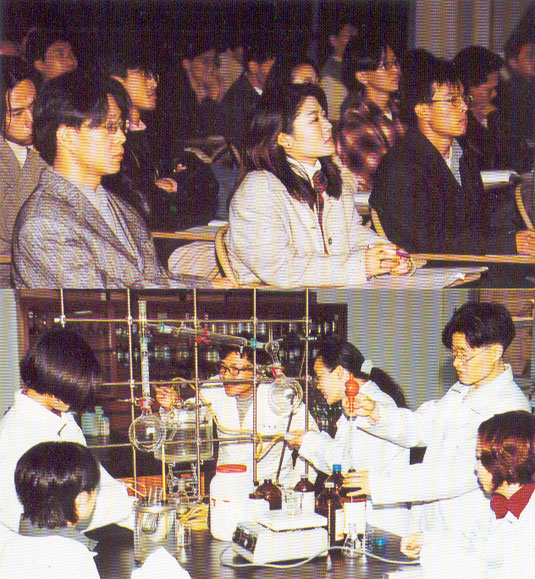 In October 1997, the departments of Urban Engineering and Computer Engineering (evening class) were opened. In that year, the Master's degree program in Computer Science was launched at the Graduate School, and the Graduate School of Logistics was established.
In October 1997, the departments of Urban Engineering and Computer Engineering (evening class) were opened. In that year, the Master's degree program in Computer Science was launched at the Graduate School, and the Graduate School of Logistics was established.
In October 1998, many evening departments were changed into the daytime departments(17 departments with 750 students), and 7 departments( the departments of Child Studies & Education, Electronic Engineering, Information and Communication Engineering, Civil Engineering, Fashion Design, Music, and Theatre and Cinema) were opened. As the Hyein Building(2,825 Pyong), with lecture rooms and Office of Academic Affairs, the Chungwoon Building(1,831 Pyong), which is the Student Center, a parking lot(5,361 Pyong,) with 2 stories under ground which accommodates around 1,000 cars, and the Hanlim Building(2,280), which holds the research offices for professors, were completed, the University put on a new aspect of being a full-fledged university in a time of globalization. Furthermore, the Moonye Building which would be used by the departments dealing with state-of-the-art sciences as well as the departments belonging to College of Arts such as Theatre and Cinema, Fashion Design, Music, and Dance Arts was completed.
In 1999, a One Stop Service Center was launched and it is now well equipped with a remarkable service system which can handle most student affairs at one stop. As selected departments were grouped into divisions, the Division of Electronics Communications and Computer Engineering(140 students) and the Division of Mathematics Information Statistics (60 students) were established in the College of Natural Science & Engineering, and the Division of Design(90 students), the Division of Music(40 students), and the Division of Theatre and Cinema(50 students) were also established in the College of Arts. In 2000 night classes were changed to morning classes for the departments of Russian Language, Chinese Language, Child Studies & Education and Accounting. In addition, the Department of Computer & Information Management is renamed the Department of Information Management. In 2001, part-time enrollment and Winter/Summer School programs became available, and the Department of Electronic Commerce was newly established. The departments of French Language, Economics, and Information Management moved from night classes to day classes. The Department of Russian Language and the Department of French Language were grouped into the Division of European Language, the Division of the Electronic Communications and Computer Engineering were subdivided into the department of Electronic Engineering, the Department of Information and Communication Engineering, and the Department of Computer Engineering, and the department of Chemistry was renamed the Department of Applied Chemistry. The Department of Child Studies and Education began offering Level B certificate programs for kindergarten teachers. On September 1, the Philosophical Thought Center was established.
In 2002 Dr. Byung Chun Min resumed the office as the 6th president and online cyber lecture programs became available. In addition, Center for Teaching and Learning and Seokyeong University Social Service Corps were opened to promote the developments of teaching methods and academic media production services along with the support systems for student volunteer services.
In 2003 the university established the Department of Software in IT division, and the nation’s first 4-year undergraduate course of Beauty Art was introduced. Also, in June the Sang Seung Kwan was established for the benefit of students preparing for national examinations, and in September the Institute of Quality Academy was founded.
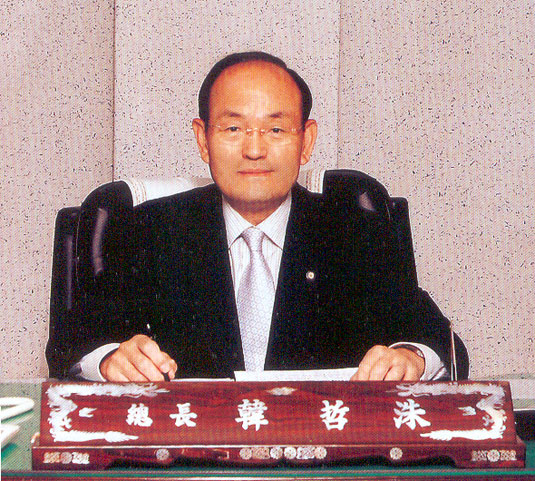 On February 2, 2004 Dr. Chul Soo Han was inaugurated as the 7th president and took firm steps to strengthen full-time education and leadership education, information literacy and computing power, foreign language skills and international exchanges, and creative university cultures in purpose to become a prestigious university in this world through globalization, specialization, knowledge and information basis and practical education. In July, the University and Industry Collaboration Center was established as corporation sole. In October, 2004, the undergraduate department of Fashion Design, the master’s degree program in Urban Engineering along with Theatre and Cinema, counseling education courses in the Graduate School of Education and the Doctor’s degree program in Beauty Art became available. It was the first time in nation to offer the doctor’s degree program in Beauty Art, and thus by making a connection with the education system of Continuing Education Center and undergraduate and master’s Beauty Art, the program was able to adopt unparalleled system which would raise professional and outstanding beauty artists. At the same time, in an effort to diversify international exchanges the university concluded a sisterhood relationship with Chinese Culture University based in Taiwan.
On February 2, 2004 Dr. Chul Soo Han was inaugurated as the 7th president and took firm steps to strengthen full-time education and leadership education, information literacy and computing power, foreign language skills and international exchanges, and creative university cultures in purpose to become a prestigious university in this world through globalization, specialization, knowledge and information basis and practical education. In July, the University and Industry Collaboration Center was established as corporation sole. In October, 2004, the undergraduate department of Fashion Design, the master’s degree program in Urban Engineering along with Theatre and Cinema, counseling education courses in the Graduate School of Education and the Doctor’s degree program in Beauty Art became available. It was the first time in nation to offer the doctor’s degree program in Beauty Art, and thus by making a connection with the education system of Continuing Education Center and undergraduate and master’s Beauty Art, the program was able to adopt unparalleled system which would raise professional and outstanding beauty artists. At the same time, in an effort to diversify international exchanges the university concluded a sisterhood relationship with Chinese Culture University based in Taiwan.
 In February 2005, Institute of Military Study was founded for the purpose of providing the academic knowledge of military studies as well as promoting the collaboration between military and university. In May the Social Education Center was renamed Continuing Education Center, and in April the Job Information Center was renamed Human Resource Development Center and a sisterhood relationship was established with Hiroshima City University. In September University and Military Collaboration Contract was concluded with Republic of Korean Army Headquarters. On November 3, the university received a permission for the Reserve Officers Training Corps(ROTC) program, which made it possible to select candidates for ROTC in 2007 and to cultivate reserve officers of our nation. At the same time, sisterhood relationships were established with Berlin University of Technology, Germany. Also, in 2006 further sisterhood relationships were established with South Dakota School of Mines & Technology, USA, in March, Utah State University, USA, in April and Beijing Humanities University, China, in May.
In February 2005, Institute of Military Study was founded for the purpose of providing the academic knowledge of military studies as well as promoting the collaboration between military and university. In May the Social Education Center was renamed Continuing Education Center, and in April the Job Information Center was renamed Human Resource Development Center and a sisterhood relationship was established with Hiroshima City University. In September University and Military Collaboration Contract was concluded with Republic of Korean Army Headquarters. On November 3, the university received a permission for the Reserve Officers Training Corps(ROTC) program, which made it possible to select candidates for ROTC in 2007 and to cultivate reserve officers of our nation. At the same time, sisterhood relationships were established with Berlin University of Technology, Germany. Also, in 2006 further sisterhood relationships were established with South Dakota School of Mines & Technology, USA, in March, Utah State University, USA, in April and Beijing Humanities University, China, in May.
 In July, 2006, the university established the Center for Nano-Technology with an aim to research the basics, applications and development of nano-technology which would take the lead on 21st century technology. In addition, the Division of Business Administration was founded in combination of the departments of Business Administration, International Trade, and Accounting.
In July, 2006, the university established the Center for Nano-Technology with an aim to research the basics, applications and development of nano-technology which would take the lead on 21st century technology. In addition, the Division of Business Administration was founded in combination of the departments of Business Administration, International Trade, and Accounting.
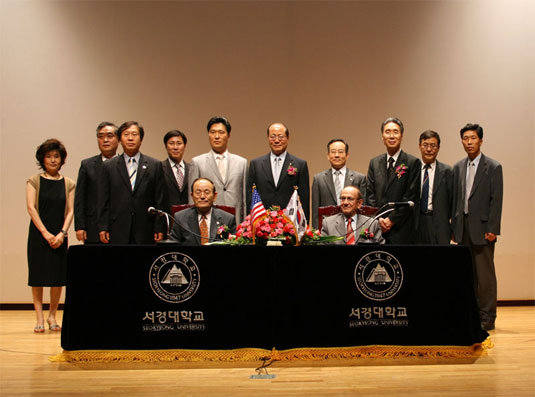 In 2007, the university established a sisterhood relationship with Pushkin State Russian Language Institute in January and Diponegoro University, Indonesia, in May. Also in July, 2007, the university signed the memorandum of understanding for joint degree program with Southern New Hampshire University, which became effective in 2008.
In 2007, the university established a sisterhood relationship with Pushkin State Russian Language Institute in January and Diponegoro University, Indonesia, in May. Also in July, 2007, the university signed the memorandum of understanding for joint degree program with Southern New Hampshire University, which became effective in 2008.
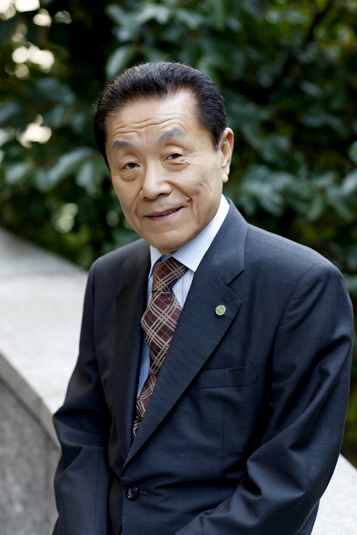 On February 1, 2008, Mr. Young Chul Choi took office as the 8th president and setting sights on the reputation in the world, presented the university’s vision as “the University Cultivating Competent Leaders of Globalization”.
On February 1, 2008, Mr. Young Chul Choi took office as the 8th president and setting sights on the reputation in the world, presented the university’s vision as “the University Cultivating Competent Leaders of Globalization”.
In June 2008, the Engineering Education Research Center was founded for the research for supporting of engineering education certification program and supporting of advancement for engineering education as well as the program development
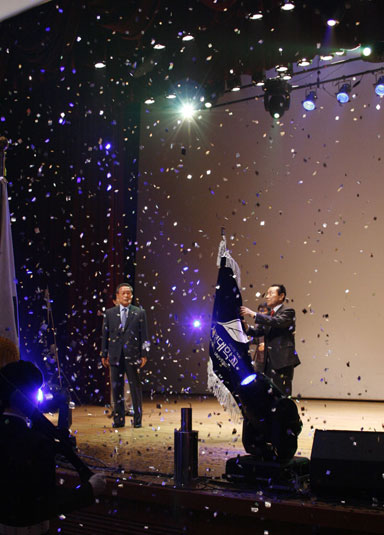 On October 21, 2008, with the celebration of the 61st anniversary, the ‘original year for second founding” was declared with the new establishment of UI (University Identity) and the vision for ‘global small but strong university’ was presented at home and abroad.
On October 21, 2008, with the celebration of the 61st anniversary, the ‘original year for second founding” was declared with the new establishment of UI (University Identity) and the vision for ‘global small but strong university’ was presented at home and abroad.
 In July 2009, following the internationalization project as the practical strategy to realize the vision of this University, the Division of International Business Language was newly established and the agreement for joint degree for the beauty arts field was entered with the University of Chichester of the GB, and following the high-tech project, the Division of Chemical and Biological Engineering (Nano-Environmental Engineering Biological Engineering) was newly established.
In July 2009, following the internationalization project as the practical strategy to realize the vision of this University, the Division of International Business Language was newly established and the agreement for joint degree for the beauty arts field was entered with the University of Chichester of the GB, and following the high-tech project, the Division of Chemical and Biological Engineering (Nano-Environmental Engineering Biological Engineering) was newly established.
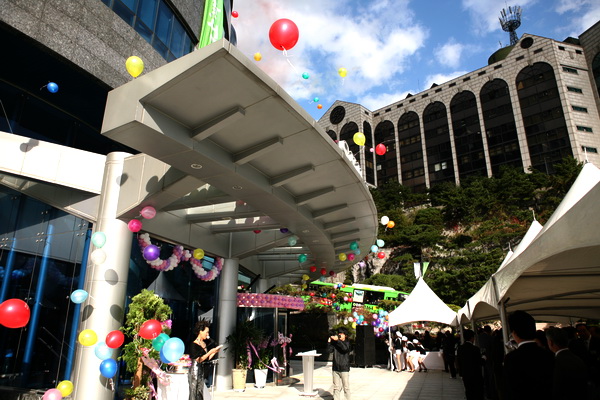 On October 19, Yudam Hall (Liberal, Global Education Center, Beauty Art Center), the high-tech integrated building with the longing for “Global Small but Strong University” as the vision of this University was opened.
On October 19, Yudam Hall (Liberal, Global Education Center, Beauty Art Center), the high-tech integrated building with the longing for “Global Small but Strong University” as the vision of this University was opened.
In June 2010, following the internationalization project of this University, the Department of Global Business Administration was newly established to exclusively undertake the joint degree program with SNHU of the US. In addition, following the practical project, the Division of Music has newly established majors in Musical and Jazz.
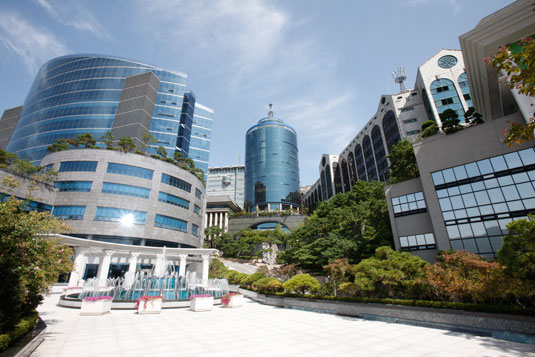 Currently, Seokyeong University consists of 7 divisions and 15 departments in 4 colleges as well as Graduate School of Business & Public Administration, Graduate School of Beauty Art, 12 affiliated organizations and 12 affiliated research institutes. It has completed the construction of the state of art library with 10 stories above ground and 6 below, covering 91,022 square meter in size. With a joint effort of all the faculty and staff and approximately 7,000 students, the university has persistently pressed on to achieve its long-term vision of 1013, stretching out to its full length to become one of the nation’s best universities in practical education.
Currently, Seokyeong University consists of 7 divisions and 15 departments in 4 colleges as well as Graduate School of Business & Public Administration, Graduate School of Beauty Art, 12 affiliated organizations and 12 affiliated research institutes. It has completed the construction of the state of art library with 10 stories above ground and 6 below, covering 91,022 square meter in size. With a joint effort of all the faculty and staff and approximately 7,000 students, the university has persistently pressed on to achieve its long-term vision of 1013, stretching out to its full length to become one of the nation’s best universities in practical education.
Chronological History
- October 22, 1947
-
“Hankook University”, founded by the Hankook Hakwon Foundation is opened.
Location – 2-ga, Changchung-dong, Chung-gu, Seoul
Organization - 2 divisions, 6 departments-
Division of Law and Politics:
- Law Department
- Department of Politics and Economics
-
Division of Liberal Arts and Science:
- Department of English Literature
- Department of Economics
- Department of Chemistry
-
Division of Law and Politics:
- February, 1949
- Elimination of department: Department of Economics
- March 28, 1955
-
The Kookjae Hakwon Foundation takes over Hankook University and changes its name to “Kookjae University.”
Location – 224 Bunji, Shindang-dong, Sungdong-ku, Seoul
Organization – 2 divisions, 5 departments-
Division of Law and Politics:
- Law Department
- Department of Politics and Economics
-
Division of Liberal Arts and Science:
- Department of English Literature
- Department of Mathematics and Physics
- Department of Chemistry
-
Division of Law and Politics:
- September, 1955
- The Ministry of Education supervises Kookjae University.
- February, 1956
-
Establishment of department: Department of Korean Literature
Elimination of department: Department of Chemistry
- April, 1956
-
The Kamri(Methodist) Hakwon Foundation takes over KookjaeUniversity.
Organization – 2 divisions, 5 departments-
Division of Law and Politics:
- Law Department
- Department of Politics and Economics
-
Division of Liberal Arts and Science:
- Department of Korean Literature
- Department of English Literature
- Department of Mathematics and Physics
-
Division of Law and Politics:
- April 9, 1958
- The Ewha Hakdang Foundation takes over Kookjae University.
- February 11, 1959
-
Establishment of department: Department of Home Economics
Organization – 2 divisions, 5 departments
Elimination of department: Department of Mathematics-
Division of Law and Politics:
- Law Department
- Department of Politics and Economics
-
Division of Liberal Arts and Science:
- Department of Korean Literature
- Department of English Literature
- Department of Home Economics
-
Division of Law and Politics:
- February, 1960
- Establishment of department: Department of Economics
- April 1, 1960
- Relocated to the new construction - #2, 2 Bunji, Choongjungrho2 ga, seodaemun-gu, Seoul
- December 2, 1961
-
Elimination of department:
- Department of Politics and Economics
- Department of Home Economics
- December 26, 1962
-
Division of Law and Politics was renamed Division of Law and Economics.
Establishment of department: Department of Business Administration in Division of Law and Economics, Department of Japanese Language and Literature and Department of Home Economics in Division of Liberal Arts and Science
Organization – 2 divisions, 7 departments-
Division of Law and Economics:
- Law Department
- Department of Economics
- Department of Business Administration
-
Division of Liberal Arts and Science:
- Department of Korean Literature
- Department of English Literature
- Department of Japanese Language and Literature
- Department of Home Economics
-
Division of Law and Economics:
- December 31, 1968
-
Renaming of department:
- Law Department ▷ Department of Law
- Department of Korean Literature ▷ Department of Korean Language and Literature
- Department of English Literature ▷ Department of English Language and Literature
- January 22, 1972
-
Graduate School of Business Administration is established
(departments: Department of Business Administration, Department of Economics).
- January 11, 1978
- Department of Home Economics is eliminated; Department of Trade is established in Division of Law and Economics.
- February 29, 1980
- Graduate School of Business Administration is closed.
- November 26, 1980
- The Sammoon Hakwon Educational Foundation takes over Kookjae University.
- March 1, 1981
-
Establishment:
- Institute of Liberal Arts
- Institute of Social Science
- Institute of Industry & Business Administration
- The Korean-Japanese Cultural Center
- February 16, 1984
- The Myungji Hakwon Educational Foundation takes over Kookjae University.
- April 16, 1987
-
The Sunghan Hakwon Educational Foundation takes over Kookjae University. Mr. Sung Min Kim becomes Chairman of the Board of Directors.
Organization – 3 divisions, 9 departments-
Division of Liberal Arts and Science:
- Department of Korean Language & Literature
- Department of English Language & Literature
- Department of Japanese Language & Literature
-
Division of Law:
- Department of Law
- Department of Administration
-
Division of Economics & Business Administration:
- Department of Economics
- Department of Business Administration
- Department of International Trade
- Department of Computer & Statistics
-
Division of Liberal Arts and Science:
- October 28, 1987
- The Department of Accounting is established under the division of Economics and Business Administration.
- March 1, 1988
- The university was relocated to 16-1 Jeongneung-dong, Sungbuk-gu, Seoul.
- April 12, 1988
- Dr. Duk Young Oh takes office as Dean.
- November 30, 1989
- The Kookjaedae Hakwon Educational Foundation is newly established to take full control of Kookjae University, independent of the Sunghan Hakwon Educational Foundation.
- July 16, 1990
- The Social Education Center is established.
- October 17, 1990
- The Division of Natural Science and Engineering is established with Department of Industrial Engineering, Department of Applied Statistics and Department of Information Processing.
- November 8, 1990
- The Graduate School of Business and Public Administration(Master’s degree programs: departments of Business Administration, Economics, Trade) is established.
- October 22, 1991
-
Establishment of departments:
- Department of Russian Language & Literature
- Department of Chinese Language & Literature
- Department of Chemistry
- Department of Applied Mathematics and Department of Industrial Design.
- Department of Industrial Engineering(20)
- Department of Applied Statistics(20)
- Department of Information Processing(20)
- April 1, 1992
- Kookjae University is licensed as a full-fledged university. Dr. Duk Young Oh takes office as the first President.
- June 16, 1992
- "Kookjaedae Hakwon" Educational Foundation is renamed "Seokyeongdae Hakwon" Educational Foundation.
- July 28, 1992
- The Graduate School is established. The Master's degree program is offered in Economics and Business Administration.
- July 31, 1992
-
Establishment of department:
- Department of Biological Engineering.
- Department of Computer Engineering
- September 1, 1992
-
"Kookjae University" is renamed "Seokyeong University"
Organization - 4 colleges with 20 departments/ Freshman Enrollment capacity ▷ 1,060-
Division of Humanities:
- Department of Korean Language & Literature
- Department of English Language & Literature
- Department of Japanese Language & Literature
- Department of Chinese Language & Literature
- Department of Russian Language & Literature
-
Division of Social Science:
- Department of Law
- Department of Administration
- Department of Economics
- Department of Business Administration
- Department of International Trade
- Department of Accounting
- Department of Computer & Statistics
-
Division of Natural Science and Engineering:
- Department of Information Processing
- Department of Applied Statistics
- Department of Industrial Engineering
- Department of Applied Mathematics
- Department of Chemistry
- Department of Biological Engineering
- Department of Computer Engineering
- Division of Arts: Department of Industrial Design
-
Division of Humanities:
- July 9, 1993
- Dr. Jae Young Huh takes office as the second President.
- March 1, 1995
- Urban Research Center is established.
- July 1, 1995
- Institute of Unification Affairs is established.
- February 1, 1996
- Dr. Byung Chun Min takes office as the third President.
- March 1, 1996
-
Establishment of department:
- Department of French
- Department of Philosophy
- May 20, 1996
- A Sisterhood Relationship with Khabarovsk State University of Technology, Russia, is established.
- June 4, 1996
- A Sisterhood Relationship with Yanbian University, China, is established.
- October 21, 1996
-
Renaming of department:
- Department of Information Processing ▷ Department of Computer Science
- Department of Computer & Statistics ▷ Department of Computer & Information Management
-
The number of students increased:
- Department of Computer Science(20)
- Department of Industrial Design(20)
- November 8, 1996
- Permission is given for the Master's degree program in Computer Science at the Graduate School.
- December 1996
- A Sisterhood Relationship with Oita University, Japan, is established.
- May 7, 1997
- A Sisterhood Relationship with the Institute of Jilinsheng Social Science, China, is established.
- June 24, 1997
- A Sisterhood Relationship with Beijing Language and Culture University, China, is established.
- September 1, 1997
- The Student Guidance Center is established.
- November 1, 1997
-
Establishment of department:
- Urban Engineering
- Computer engineering(evening)
- November 1, 1997
- The Graduate School of Logistics is established(Master's degree program is offered in Logistics and Distribution).
- November 26, 1997
- A Sisterhood Relationship with I'Université de Chambéry, France, is established.
- December 8, 1997
- A sisterhood relationship is established with the University of Houston, USA
- December 16, 1997
- A sisterhood relationship is established with Beppu University Japan,
- December 19, 1997
- A sisterhood relationship is established with Murray State University, USA
- February 1, 1998
- Dr. Byung Chun Minn takes office as the forth President.
- March 30, 1998
- A sisterhood relationship with Komsomolsk-na-Amure University, Russia, is established.
- July, 1998
- A sisterhood relationship with Novosibirsk State Technical University, Russia, is established.
- November 1, 1998
-
50% of the evening classes were changed to morning classes(750 students in 17 departments in the morning, 620 students in 14 departments in the evening).
Departments changed to morning:- Department of Korean Language & Literature
- Department of English
- Department of Japanese
- Department of Business Administration
- Department of International Commerce and Trade
- Department of Chemistry
- Department of Computer Science
- Department of Urban engineering
- Department of Industrial Design
Department of International Trade is renamed Department of International Commerce and Trade.
Establishment of department:- Departments of Child Studies & Education(evening)
- Department of Electronic Engineering
- Department of Information and Communication Engineering
- Department of Civil Engineering
- Department of Fashion Design
- Department of Theatre and Cinema, and Department of Music
Master’s degree programs in Computer & Information Management and Computer Engineering are opened at thye Graduate School.
- December, 1998
- A sisterhood relationship with Texas-Pan American University(Pan American Campus), USA, is established.
- November 1, 1999
-
Selected departments are reorganized into divisions.
-
Division of Electronics Communications & Computer Engineering:
- Electronic Engineering Major
- Computer Engineering Major
- Information and Communications Engineering Major
-
Division of Mathematical Information and Statistics:
- Applied Mathematics Major
- Information Statistics Major
-
Division of Design:
- Industrial Design Major
- Fashion Design Major
-
Division of Music:
- Voice Major
- Piano Major
- Brass and Strings Major
-
Division of Theatre and Cinema:
- Theory and Directing Major
- Drama Performance Major
Department of Law, Division of Mathematical Information and Statistics, and Department of Industrial Engineering are changed from evening class to day class.
The Department of Dance Art(30 students) is opened.
Permission to adjust the enrollment capacity in the Graduate School.
Ph.D. program is newly established in the Graduate School: Department of Business Administration
Establishment of master's programs in the Graduate School:- Korean Language and Literature
- English Language
- Chinese Language
- Law
- Public Administration
- Chemistry
- Biological Engineering
- Industrial Engineering
Graduate School of Education is established(Master's program in Education Administration is opened).
-
Division of Electronics Communications & Computer Engineering:
- February 1, 2000
- Dr. Byung Chun Min assumes office as the fifth president.
- March 1, 2000
- Organization : 4 colleges with 5 divisions and 13 departments in the day time and 10 departments in the evening/ Freshman enrollment capacity ▷ 1,370
- August, 2000
-
Ph. D. program in Computer Science is opened at the Graduate School.
Department of Russian Language, Chinese Language, Child Studies & Education and Accounting moved from night classes to day classes
Department of Computer & Information Management is renamed the Dept. of Information Management.
Organization : 4 colleges with 5 divisions and 17 departments in the day time and 6 departments in the evening/ Freshman enrollment capacity ▷ 1,370
- August 2001
-
Part-time enrollment and Winter/Summer School programs are available.
Division of European Language(Department of Russian Language and French Language-40 students) is opened.
Department of Electronic Commerce is opened.
Department of French Language, Economics, and Information Management moved from night classes to day classes.
Renaming:- The Department of Russian Language ▷ Russian Language Major
- Department of French Language ▷ French Language Major
- Department of Chemistry ▷ Department of Applied Chemistry
- Department of Information Management ▷ Department of Internet Information
- Department of Electronic Engineering
- Department of Information and Communication Engineering
- Computer Engineering
- Department of Computer Engineering
- Department of Industrial Engineering
- Department of Biological Engineering
- Department of Japanese Language
- Department of Industrial Design
- Computer Science Education Major
- English Education Major
Graduate School of Investment Information(master's program: Department of Real Estate Information, Department of Venture Management, Department of Financial Information)is established.
Graduate School of Social Sciences(master's program: Department of Counseling Psychology, Department of Adolescent Guidance, Department of Social Welfare) is established.
Organization : 4 colleges with 5 divisions and 22 departments in the day time and 2 departments in the evening/ Freshman enrollment capacity ▷ 1,410
- September, 2001
- Philosophical Thought Center is established.
- February 1, 2002
- Dr. Byung Chun Min assumes office as the sixth president.
- March, 2002
- On-line cyber lecture programs, Social Service Corps, Center for Teaching and Learning are opened.
- November, 2002
-
Establishment of department: Department of Software(40 students), Department of Beauty Art(30 students)
Master's programs of Graduate School: Department of International Commerce and Trade, Department of Electronic Engineering
Master’s degree program offered by the Graduate School of Business Administration: Management of Beauty Art
Renaming of department in the Graduate School of Education: Computer Engineering Education ▷ Computer Education
Organization : 4 colleges with 5 divisions and 24 departments in the day time and 3 departments in the evening/ Freshman enrollment capacity ▷ 1,450
- March 2, 2003
- The Sang Seung Kwan is opened.
- April, 2003
- A sisterhood relationship with Dongbei University of Finance & Economics, China, is established.
- September, 2003
-
Change in the major at registration: Theory and Directing Major ▷ Film Major
New master’s program of Graduate School: Department of Beauty Art, Department of Music
New master’s program offered by the Graduate School of Beauty Art: Department of Beauty Art
The Graduate School of Investment Information is eliminated(Department of Financial Information, Department of Venture Management)
Institute of Quality Academy is established.
- February 1, 2004
- Dr. Chul Soo Han is inaugurated as the 7th president.
- June, 2004
- A sisterhood relationship with Novosibirsk State Technical University, Russia, is established.
- July 12, 2004
- University and Industry Collaboration Center is established.
- October, 2004
-
Establishment of department: Department of Fashion Design
Establishment of major: Division of Design(Visual Contents Design Major, Cultural and Industrial Art Design Major)
Elimination of Major: Division of Design(Industrial Design Major, Fashion Design Major)
New master’s program of Graduate School: Department of Urban Engineering, Department of Drama and Film
New master’s program offered by the Graduate School of Education: Counseling Education
A sisterhood relationship with Chinese Culture University, Taiwan, is established.
- February 14, 2005
- Institute of Military Study is established.
- March, 2005
- Social Education Center is renamed Continuing Education Center.
- April, 2005
-
A sisterhood relationship with Hiroshima City University, Japan, is established.
Job Information Center is renamed One Stop Service Center.
September, 2005 University of Military Collaboration Contract with Republic of Korean Army Headquarters.
A sisterhood relationship with Berlin University of Technology, Germany, is established.
- November 3, 2005
- Permission is given for the Reserve Officers Training Corps(ROCT) program.
- March, 2006
- A sisterhood relationship with South Dakota School of Mines & Technology, USA, is established.
- April, 2006
- A sisterhood relationship with Utah State University, USA, is established.
- May, 2006
- A sisterhood relationship with Beijing Humanities University, China, is established.
- July 1, 2006
-
Center for Nano-Technology is established.
Business Administration Major, International Commerce and Trade Major and Accounting Major are reorganized into the Division of Business Administration.
The Special Graduate School of Business Administration, Logistics and Social Science are combined and renamed the Graduate School of Industry.
- January, 2007
- A sisterhood relationship with Pushikin State Russian Language Institute, Russia, is established.
- February, 2007
-
Undergraduate - 4 colleges with 6 divisions and 24 departments (3 departments in the evening)
-
College of Humanities:
- Department of Korean Language and Literature
- Department of English Language
- Department of Japanese Language
- Department of Japanese Language
- Department of Chinese Language
- Department of European Language
- Department of Philosophy
- Department of Child Studies
-
College of Social Science:
- Department of Law
- Department of Administration
- Department of Economics
- Department of Business Administration
-
College of Natural Science and Engineering:
- Department of Computer Science
- Department of Internet Information
- Department of Electronic commerce
- Department of Software
- Department of Applied Chemistry
- Division of Mathematical Information and Statistics
- Department of Electronic Engineering
- Department of Information and Communication Engineering
- Department of Computer Engineering
- Department of Biological Engineering
- Department of Industrial Engineering
- Department of Urban Engineering
- Department of Civil Engineering
-
College of Arts:
- Division of Design
- Department of Fashion Design
- Division of Music
- Division of Drama and Film
- Department of Dance Art
- Department of Beauty Art
- Graduate School – 28 departments in master’s degree program, 6 departments in Ph.D. program
-
Special Graduate School:
- Graduate School of Education
- Graduate School of Industry
- Graduate School of Beauty Art
-
College of Humanities:
- March, 2007
- Reserve Officers Training Corps is established.
- May 8, 2007
- A sisterhood relationship with Diponegoro University, Indonesia, is established.
- July 9, 2007
- The Memorandum of Understanding for joint degree program with Southern New Hampshire University is signed.
- August, 2007
-
Organization : 4 colleges with 7 divisions and 17 departments/ Freshman enrollment capacity ▷ 1,410
Establishment of department:- Department of Military Studies(40 students)
- Department of Economics and Finance Engineering(40 students)
Department of Philosophy changed to morning.
Department of Economics is renamed Department of Economics and Finance.
Combining departments- College of Social Science: Law, Administration(evening) ▷ Division of Public Human Resources
- College of Natural Science and Engineering: Computer Science, Internet Information, Electronic Commerce, Software ▷ Department of Computer Science
- Applied Chemistry, Biological Engineering ▷ Department of Chemical & Biological Engineering
- Electronic Engineering, Information and Communication Engineering ▷ Department of Electronic Engineering
- College of Arts: Beauty Art, Fashion Design ▷ Division of Beauty Art & Fashion Design
Combining into division: Division of Beauty Art & Fashion Design(Beauty Art Major, Fashion Design Major)
Establishment of Major:- Division of Business Administration(Joint degree program with SNHU, USA)
- Division of Drama and Film(Performing Arts Major)
Elimination of major: Department of Dance Art(Ballet Major)
The number of students increased:- Division of Drama and Film(10 students)
- Division of Music(30 students)
- February 1, 2008
- Mr. Young Chul Choi takes office as the 8the president.
- February, 27, 2008
- The construction of Library is completed(10 stories above ground, 6 below, 51,484 square meter)
- March 1, 2008
-
Organization
Undergraduate: 4 colleges with 7 divisions and 17 departments/ Freshman enrollment capacity ▷ 1410
Division of Business Administration: joint degree program with SNHU, USA(GLP: Global Leader Program), takes effect.
- June 11, 2008
- School-based enterprise - Paper House, KEN Research Center - are founded.
- October 1, 2008
-
The Center for Engineering Research is established.
Division of Drama and Film: Performing Arts Major is renamed Performance Skills Major.
- October 21, 2008
-
New University Identity is proclaimed.
Undergraduate: 4 colleges, 7 divisions, 17 departments/ Freshman enrollment capacity ▷ 1,410
Graduate School: 10 departments in master’s degree program, 5 departments in Ph.D. program/ Admission quota ▷ 98
Special Graduate School: Graduate School of Business Administration – 3 departments in master’s degree program/ Admission quota ▷ 60
Graduate School of Beauty Art – 1 department in master’s degree program/ Admission quota ▷ 40
- Jul. 3, 2009
- Entered into an agreement for joint degree with the University of Chichester of the GB (beauty arts field)
- Jul. 2009.
-
Newly established Division of International Business Language: 160 students, English, Japanese, Russian, French and Chinese languages
Division of Chemical and Biological Engineering: 80 students, Nano-Environmental Engineering Biological Engineering
Newly established department: Department of Beauty Arts
Closure of department (division): Department of Chemical & Biological Engineering, Division of Beauty Fashion
Change of major name: Division of Theatre and Film, Film → Film and Video
Integration of department: Department of English Language, Department of Japanese Language, Department of European Language, and Department of Chinese Language → Division of International Business Language
Closure of major: Division of Beauty Fashion (Fashion)
- Oct. 19, 2009
- Opening ceremony for Yudam Hall (Liberal, Global Education Center, and Beauty Art Center)
- Jan. 2010.
- Change of department name for graduate school: Department of Entertainment Management → Department of Culture and Art Management
- Mar. 1, 2010
-
Organization of department: 4 colleges, 7 divisions, and 14 departments
Graduate school: 10 master’s programs, 5 doctoral programs
Special Graduate School: Graduate School of Business Administration – 3 master’s programs,
Graduate School of Beauty Arts – 1 master’s program, joint degree program with the University of Chichester of the GB: Department of Beauty Arts
- Jun. 2010
-
Newly established dept: Department of Global Business Administration
Newly established major: Division of Music (Musical and Jazz)
Closure of major: Division of Music (Voice)
- 2011. 3. 1.
-
Organization of department: 4 colleges, 7 divisions, and 15 departments
College of Humanities: Division of International Business Language, Department of Korean Language and Korean Literature, Department of Philosophy, and Department of Child Studies
College of Social Science College of Social Science: Division of Public Human Resources, Department of Economics & Finance, Division of Business Administration, Department of Global Business Administration, and Department of Military Studies
College of Natural Science & Engineering: Division of Chemical and Biological Engineering, Department of Computer Science, Department of Financial Information Engineering, Department of Electronics Engineering, Department of Computer Engineering, Department of Industrial Engineering, Department of Urban Engineering, and Department of Civil Engineering
College of Arts: Division of Design, Division of Music, Division of Theatre and Film, Department of Dance Arts, and Department of Beauty Arts
Graduate school: 10 departments with master’s program - Department of Culture and Art, Department of Business Administration, Department of Electronic & Computer Engineering, Department of Nano & Biological Engineering, Department of Urban & Environment System Engineering, Department of Industrial Design, Department of Music, Department of Dance Art, Department of Theatre and Film, and Department of Beauty Arts
5 departments with doctoral program - Department of Culture and Art, Department of Business Administration, Department of Electronic & Computer Engineering, Department of Nano & Biological Engineering, and Department of Beauty Arts
Graduate School of Business Administration: 3 departments with master’s program
Department of Business Administration, Department of Logistics, and Department of Culture and Art
Graduate School of Beauty Arts: 1 department with master’s program –
Established and operated the relevant departments with Department of Beauty Arts (Undergraduate: Department of Beauty Arts, Graduate school: Department of Business Administration, and Department of Beauty Arts)
































































